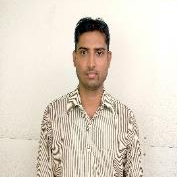
Rajeev Kumar
Work place: Department of Computer Science, Central University of South Bihar, Gaya, India
E-mail: rajeev6136@gmail.com
Website:
Research Interests: Image Manipulation, Image Compression, Signal Processing, Image Processing
Biography
Rajeev Kumar received the B.Tech. Degree from Gandhi Institute for Technological Advancement, Bhubaneswar, Under Biju Patnaik University of Technology, 2010 and the M.Tech. Degree from Centre for computer science and Technology in Central University of Punjab, Bathinda, 2015. His research area interest is in the area of signal processing, image compression and video watermarking.
Author Articles
Analysis of Arithmetic and Huffman Compression Techniques by Using DWT-DCT
DOI: https://doi.org/10.5815/ijigsp.2021.04.05, Pub. Date: 8 Aug. 2021
In the recent era, digital contents are exchanging over the internet and it has increased exponentially. Sometimes, we need small sizes to share the real world, because of narrow bandwidth. Hence, the data compression concept came in limelight to utilize the storage capacity and available bandwidth efficiently. This paper presents an analysis of Arithmetic and Huffman compression techniques based on a hybrid combination of the DWT-DCT techniques. The input image is decomposed up to the 3rd level by using the DWT and then Arithmetic & Huffman coding is applied separately on quantized sub-bands on 2nd as well as 3rd level coefficients from approximation sub-bands to get a high compression ratio and high peak signal-to-noise ratio values. On the third level approximation sub-band, the DCT method is applied to reduce the blocking effect. Simulation results show that the Arithmetic coding exhibits higher CR than Huffman coding, but smaller PSNR values.
[...] Read more.A Review: DWT-DCT Technique and Arithmetic-Huffman Coding based Image Compression
By Gaurav Kumar Er. Sukhreet Singh Brar Rajeev Kumar Ashok Kumar
DOI: https://doi.org/10.5815/ijem.2015.03.03, Pub. Date: 8 Sep. 2015
Nowadays, the volume of the data is increasing with time which generates a problem in storage and transfer. To overcome this problem, the data compression is the only solution. Data compression is the science (or an art) of representing information in compact form. This is an active research area. Compression is to save the hardware storage space and transmission bandwidth by reducing the redundant bits. Basically, lossless & lossy are two types of data compression technique. In lossless data compression, original data is similar to decompressed or decoded data, but in lossy technique is not same. In this paper, Study lossless image compression technique. The purpose of image compression is to maximum bandwidth utilization and reduces storage capacity. This technique is beneficial to image storage and transfer. At the present time, Mostly image compression research have focused on the wavelet transform due to better performance over another transform. The performance is evaluated by using MSE & PSNR. DWT, quantization, Arithmetic, Huffman coding and DCT techniques are briefly introduced. After decompression, the quality of image is evaluated using PSNR parameter between original & decoded image. Compression ratio (CR) parameter is calculated to measure how many times image compressed.
[...] Read more.Other Articles
Subscribe to receive issue release notifications and newsletters from MECS Press journals